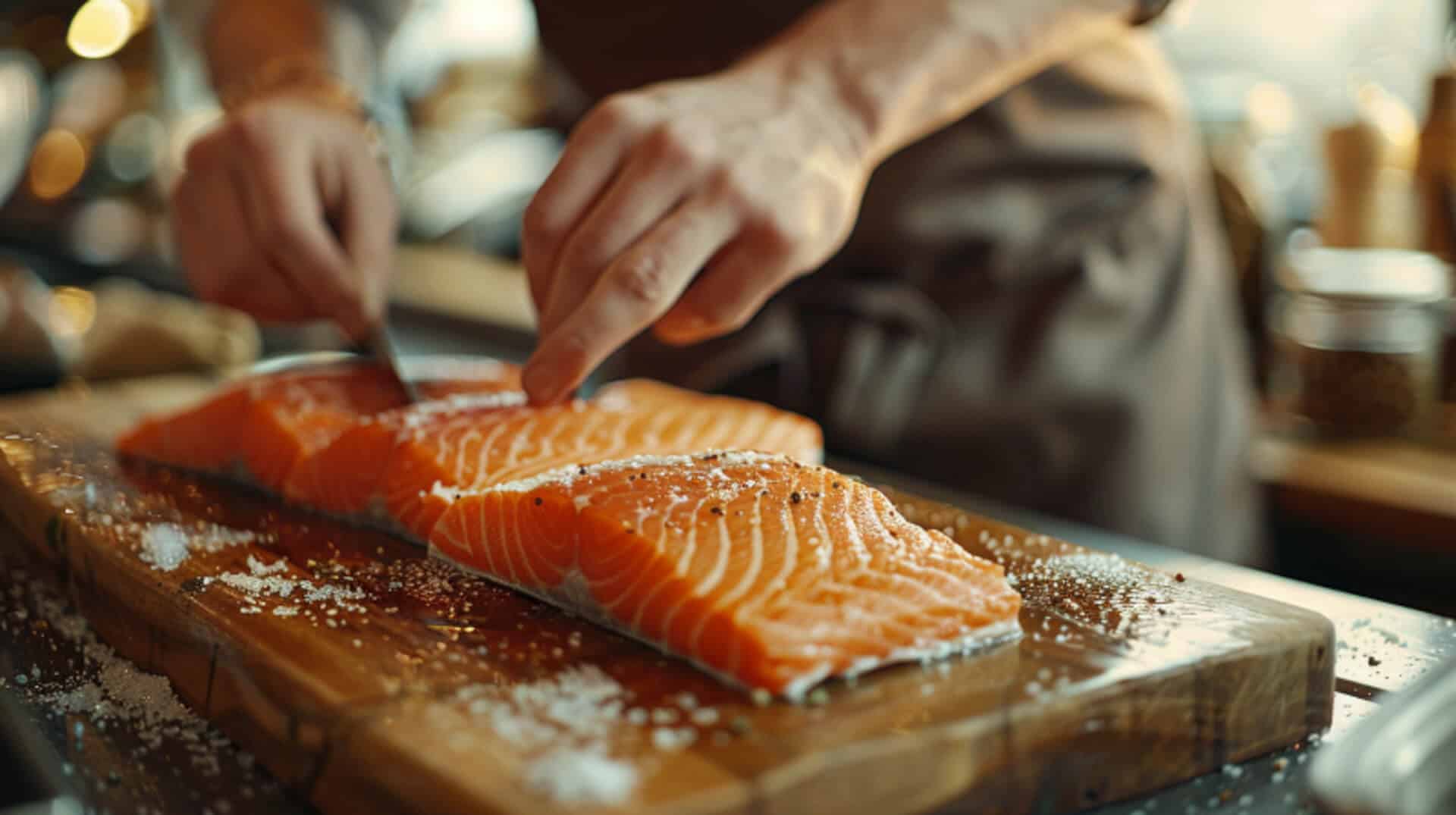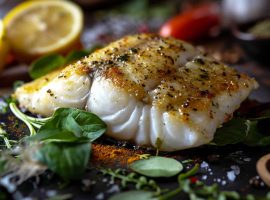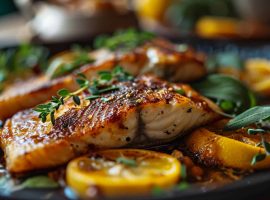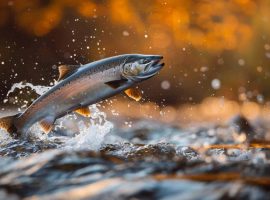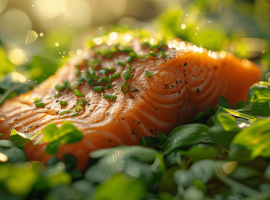Identifying Iron-Rich Fish Varieties
When selecting fish for their iron content, certain species stand out as particularly beneficial. Tuna, salmon, mackerel, and sardines are known for their higher iron levels, making them excellent choices for those looking to boost their dietary iron intake. Compared to other sources, the iron found in fish is predominantly heme iron, which is more readily absorbed by the body than the non-heme iron present in plant-based foods.
Benefits of Heme Iron in Fish
Heme iron, the form of iron found in animal products, is distinguished by its superior bioavailability. This means that heme iron from fish is more efficiently utilised by the body, enhancing the oxygen-carrying capacity of the blood and supporting metabolic processes. The presence of heme iron in fish also contributes to the overall nutrient synergy, aiding in the absorption of other essential vitamins and minerals.
Selecting Iron-Rich Fish at Markets
To identify iron-rich fish while shopping, consumers should look for darker, oilier fleshed fish, as these tend to have higher iron content. Labels and certifications can also provide guidance, indicating whether the fish is wild-caught or farm-raised, which may affect nutrient levels. Additionally, reputable fishmongers and store attendants can offer valuable insights into the iron content of their seafood offerings.
Nutritional Profiles of Iron-Rich Fish
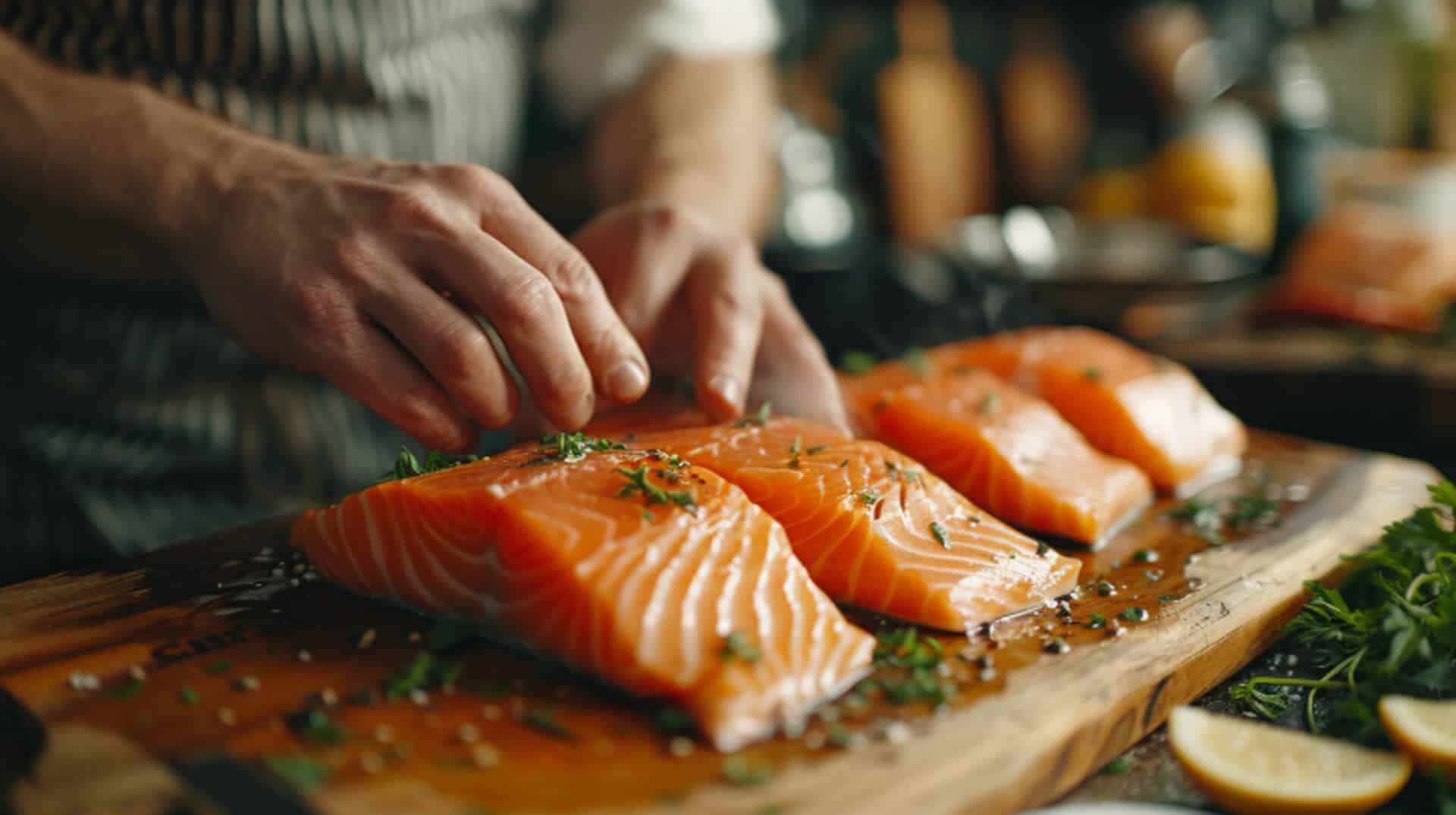
When selecting fish for their iron content, it’s essential to consider the accompanying nutrients that facilitate iron absorption and contribute to overall health. Iron-rich fish such as tuna, salmon, mackerel, and sardines are not only valuable sources of heme iron but also provide a synergistic blend of omega-3 fatty acids, vitamin B12, and vitamin D.
Synergy of Nutrients in Iron Absorption
The presence of omega-3 fatty acids in these fish enhances cardiovascular health and supports brain function, while vitamin B12 plays a pivotal role in red blood cell formation and neurological maintenance. Vitamin D, another crucial nutrient found in these fish, aids in bone health and immune function. Together, these nutrients work in concert to optimise the body’s utilisation of iron and bolster overall well-being.
Optimal Fish for Nutrient Absorption
Certain species stand out for their nutrient profile that promotes iron absorption. For instance, oily fish like salmon and mackerel are not only high in iron but also rich in omega-3 fatty acids, which are known for their anti-inflammatory properties.
Balanced Diet Recommendations
To maintain a balanced diet, it’s recommended that adults consume two servings of fish per week, equating to approximately 8 ounces. This serving size ensures adequate intake of iron and other vital nutrients without exceeding recommended dietary limits. Pregnant women and young children should consult healthcare providers for tailored advice on fish consumption, considering both nutritional needs and exposure to potential contaminants.
Maximising Iron Intake Through Fish Preparation
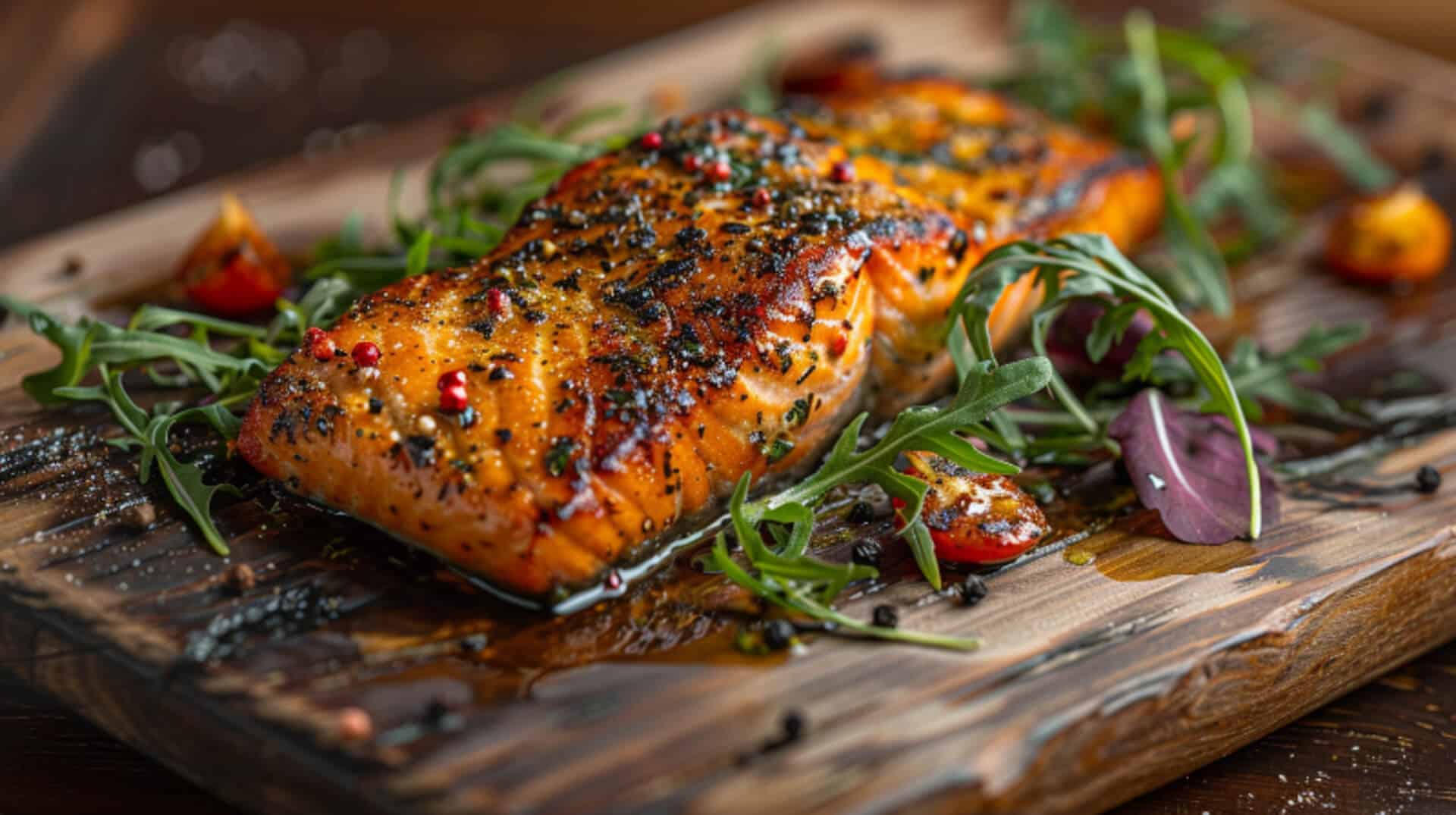
Cooking Methods to Preserve Iron
To preserve the iron content in fish, gentle cooking methods are recommended. Steaming or baking fish in a well-sealed package can prevent iron loss that might occur with high-temperature methods like frying. Slow-cooking can also be beneficial, as it allows the fish to cook thoroughly without reaching temperatures that might degrade the nutrients.
Enhancing Iron Bioavailability
Marinating fish in acidic ingredients such as lemon juice or vinegar before cooking can increase the bioavailability of iron. The acid helps to convert ferric iron, which is less readily absorbed, into the more absorbable ferrous form. Additionally, pairing fish with vitamin C-rich vegetables like bell peppers or leafy greens can further enhance iron absorption.
The Impact of Freshness on Iron Levels
Fresh fish typically contains higher levels of iron compared to fish that has been stored for extended periods. To ensure maximum iron intake, it is advisable to consume fish soon after purchase or to opt for frozen options that are flash-frozen at sea to lock in nutrients.
Iron-Rich Fish Recipes
Incorporating iron-rich fish into your diet can be both healthful and delicious. Recipes that include baked salmon with a citrus glaze or steamed mussels with a tomato and garlic broth not only provide a flavorful meal but also contribute significantly to your daily iron intake.
Enhancing Iron Absorption from Seafood

Factors Influencing Iron Absorption
The body’s ability to absorb iron from fish is influenced by several factors. The form of iron present in seafood, known as heme iron, is typically absorbed more efficiently than non-heme iron found in plant sources. However, the overall iron absorption can be affected by the presence of other dietary components consumed at the same meal.
Role of Vitamin C in Iron Uptake
Vitamin C is a potent enhancer of iron absorption. It converts iron into a form that is more readily absorbed by the body. Including foods high in vitamin C, such as citrus fruits or bell peppers, in meals with fish can significantly increase the amount of iron absorbed.
Heme vs. Non-Heme Iron Absorption
Heme iron, which is found in fish and other animal products, is absorbed at a much higher rate compared to non-heme iron. The body utilises heme iron more effectively, making seafood an excellent choice for those looking to increase their iron intake.
Dietary Optimization for Iron Absorption
To optimise iron absorption from fish, it is advisable to consume seafood alongside foods rich in vitamin C while avoiding substances that can inhibit iron uptake, such as calcium from dairy products or tannins from tea. Cooking fish with methods that preserve its nutrient content, such as baking or steaming, can also help maintain its iron levels.
Addressing Health Concerns: Mercury and Contaminants in Fish

Mitigating Mercury Risks in Seafood
Mercury is a contaminant that can accumulate in fish, particularly in larger and longer-lived species. To mitigate the risks of mercury, it is advisable to consume smaller fish and to limit the intake of species known for higher mercury levels, such as shark, swordfish, and king mackerel. The FDA and EPA provide guidelines that recommend the consumption of fish with lower mercury content, especially for pregnant women and young children.
Selecting Low-Contaminant Fish Species
Fish species such as salmon, sardines, and trout are typically associated with lower risks of mercury and other contaminants. These species are not only rich in iron but also safer options for regular consumption. When selecting seafood, one should consider the source, as fish from polluted waters are more likely to contain higher levels of contaminants.
Environmental Factors Affecting Fish Safety
The environment from which fish are sourced significantly affects contaminant levels. Fish from clean, well-managed waters are less likely to contain harmful levels of mercury and other pollutants. Sustainable fishing practices also play a role in maintaining the health of fish populations and ecosystems, which can impact the safety of the seafood.
Guidelines for Choosing Safe Iron-Rich Fish
Consumers should follow established guidelines to choose safe, iron-rich fish. These include opting for smaller fish, checking advisories for locally caught fish, and referring to resources like the FDA’s “Eating Fish: What Pregnant Women and Parents Should Know” for specific recommendations on fish consumption. By adhering to these guidelines, individuals can enjoy the health benefits of iron-rich fish while minimising exposure to contaminants.
Tailoring Iron Intake: Recommendations for Diverse Demographics

Varied Iron Needs Across Age and Population
Iron requirements differ significantly across various age groups and populations due to distinct physiological demands. For instance, infants and toddlers require more iron to support rapid growth, while adults need consistent iron intake to maintain bodily functions and energy levels. Pregnant women have heightened iron needs to accommodate increased blood volume and foetal development.
Iron Consumption for Pregnant Women and Children
For pregnant women, adequate iron intake is crucial to prevent anaemia and support the growing foetus. The recommended dietary allowance (RDA) for iron is 27 milligrammes per day for pregnant women. Children’s iron needs vary by age, with infants requiring 11 milligrammes per day and older children needing 8 to 10 milligrammes, depending on their specific age group.
Increased Iron Requirements for Specific Health Conditions
Individuals with conditions such as chronic kidney disease or those who have undergone gastric bypass surgery may require increased iron intake. These conditions can impair iron absorption, making it necessary to consume higher amounts of iron-rich foods or supplements.
Iron Sources for Vegetarians and Vegans
Vegetarians and vegans can meet their iron needs through plant-based sources like lentils, chickpeas, fortified cereals, and leafy greens. Consuming these with vitamin C-rich foods enhances non-heme iron absorption. For those who do not consume fish, these alternatives are essential to maintain adequate iron levels.
Sustainable Fishing and Iron Content in Fish

Sustainable fishing practices are essential for maintaining fish populations and ecosystems, which can indirectly affect the iron content in fish. Overfishing and destructive fishing methods can deplete fish stocks and disrupt the food chain, potentially leading to a decrease in the nutritional value of seafood, including its iron content.
Best Practices for Selecting Sustainable Iron-Rich Fish
When choosing sustainably sourced iron-rich fish, look for certifications such as the Marine Stewardship Council (MSC) or Aquaculture Stewardship Council (ASC). These labels indicate that the seafood has been sourced following stringent environmental standards. Additionally, opting for locally sourced fish can reduce the environmental impact and often provides fresher options, which can be higher in nutrients.
Supporting Sustainable Fishing
Consumers can support sustainable fishing by purchasing seafood from responsible sources, advocating for stricter fishing regulations, and raising awareness about the importance of sustainable practices. By making informed choices, you’re contributing to the health of marine ecosystems and ensuring the long-term availability of iron-rich fish.
Environmental Benefits of Sustainable Seafood Choices
Choosing sustainable iron-rich fish options helps preserve marine biodiversity, protect habitat, and maintain the balance of oceanic ecosystems. Sustainable fishing ensures that fish populations remain robust and that the seafood on your plate is not only nutritious but also ethically sourced.
Iron Supplementation vs. Natural Intake from Fish
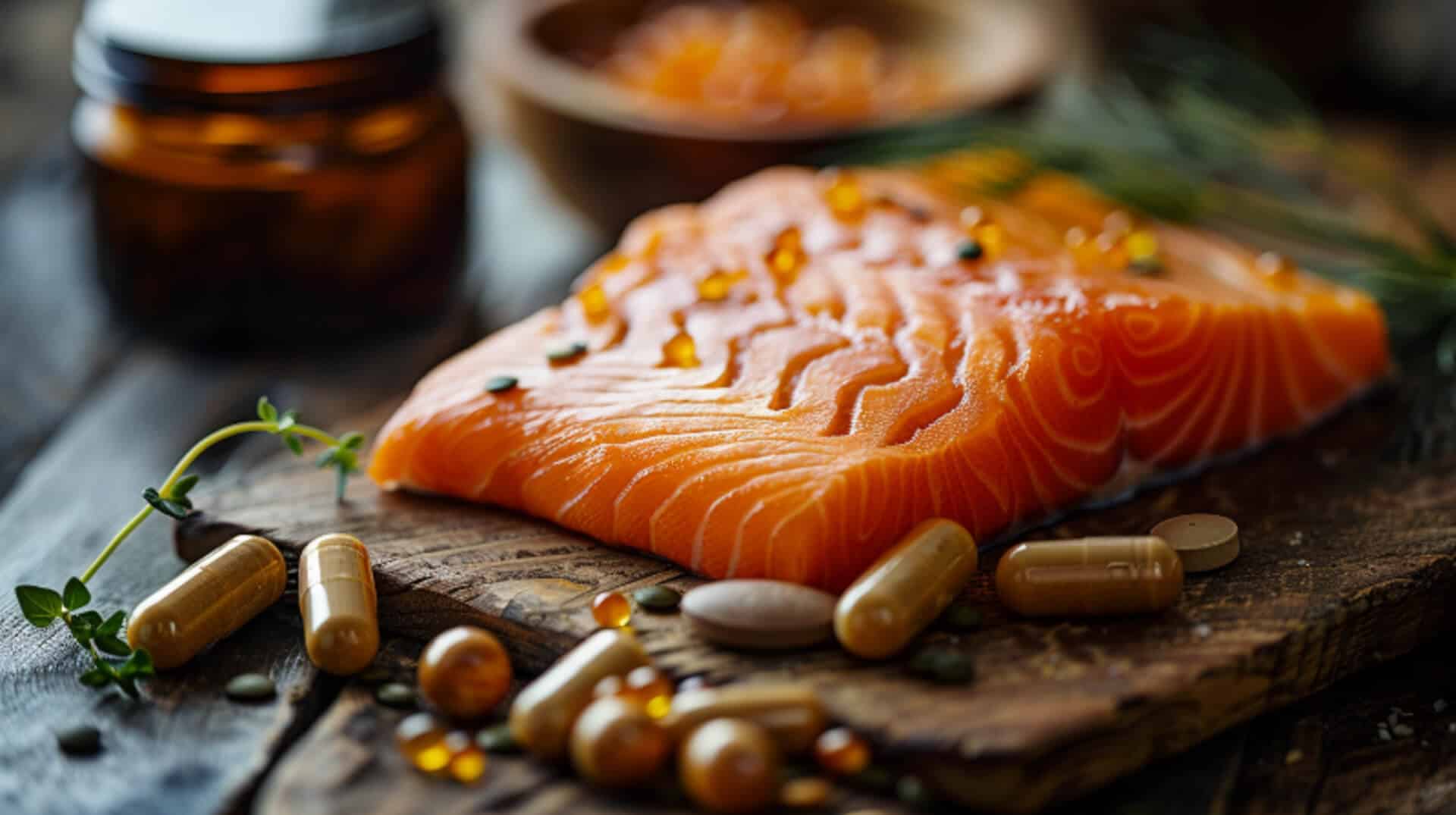
Necessity of Iron Supplements
Iron supplements may become necessary for individuals who are unable to meet their iron needs through diet alone, such as those with iron-deficiency anaemia or certain health conditions that impair iron absorption. Compared to iron from fish, supplements provide a concentrated dose of iron that can quickly improve iron levels in the blood.
Pros and Cons of Iron Sources
The primary advantage of obtaining iron from fish is the presence of heme iron, which is more readily absorbed by the body than the non-heme iron found in supplements. Fish also offer additional nutrients like omega-3 fatty acids. However, supplements are beneficial for those who require higher iron doses or have dietary restrictions that limit fish consumption.
Balancing Iron Intake
To balance iron intake from fish with supplementation, it is crucial to monitor blood iron levels and adjust intake accordingly. Over-supplementation can lead to iron overload, so it’s important to consult healthcare providers before starting any supplement regimen.
Choosing Quality Iron Supplements
When selecting iron supplements, consumers should look for products that specify the form of iron, such as ferrous sulphate or ferrous gluconate, and the amount of elemental iron provided. High-quality supplements will also have undergone third-party testing for purity and potency.
Addressing Iron Deficiency: The Role of Fish in Global Diets
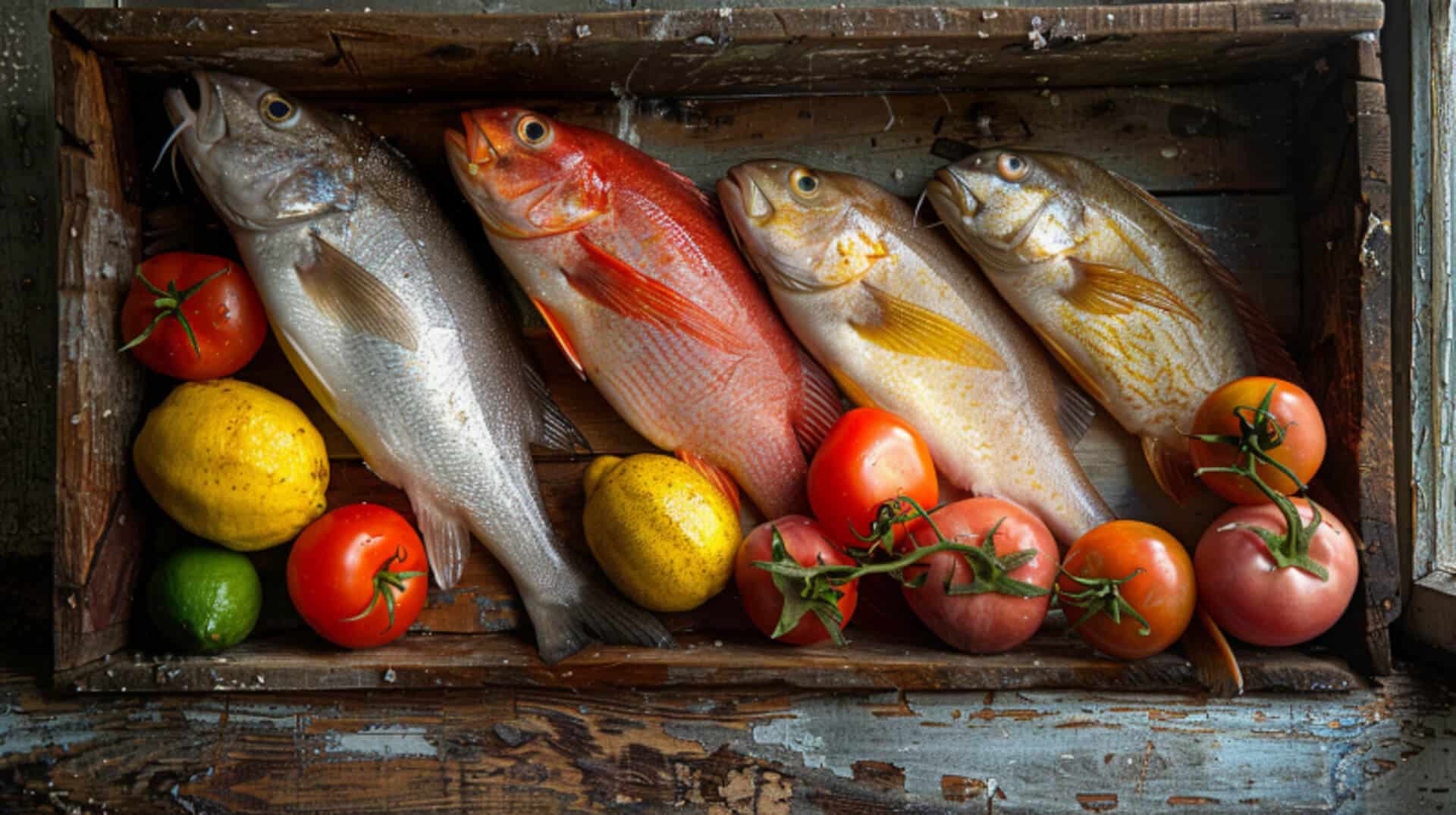
Iron deficiency is a widespread public health issue, affecting populations worldwide, particularly in regions with limited access to diverse food sources. Fish, as a source of heme iron, plays a vital role in combating this deficiency due to its higher bioavailability compared to non-heme iron from plant sources.
Global Initiatives Promoting Fish Consumption
Several global initiatives aim to increase iron intake through fish consumption. Programmes like the FAO’s Blue Growth Initiative focus on enhancing the nutritional value of diets through sustainable aquaculture and fisheries, recognising the importance of fish in improving iron status, especially in developing countries.
Cultural Influences on Fish and Iron Intake
Cultural dietary patterns significantly influence iron intake from fish. In regions where fish is a dietary staple, such as Japan and Mediterranean countries, populations often benefit from higher iron intake and associated health advantages. These dietary habits underscore the potential of fish in addressing iron deficiency.
Lessons from Fish-Consuming Regions
Observations from regions with high fish consumption reveal valuable insights. Balanced diets rich in fish not only provide sufficient iron but also offer a range of other nutrients essential for health. Emulating these dietary patterns, where feasible, could help mitigate iron deficiency on a broader scale.
Innovative Approaches to Iron Intake from Fish
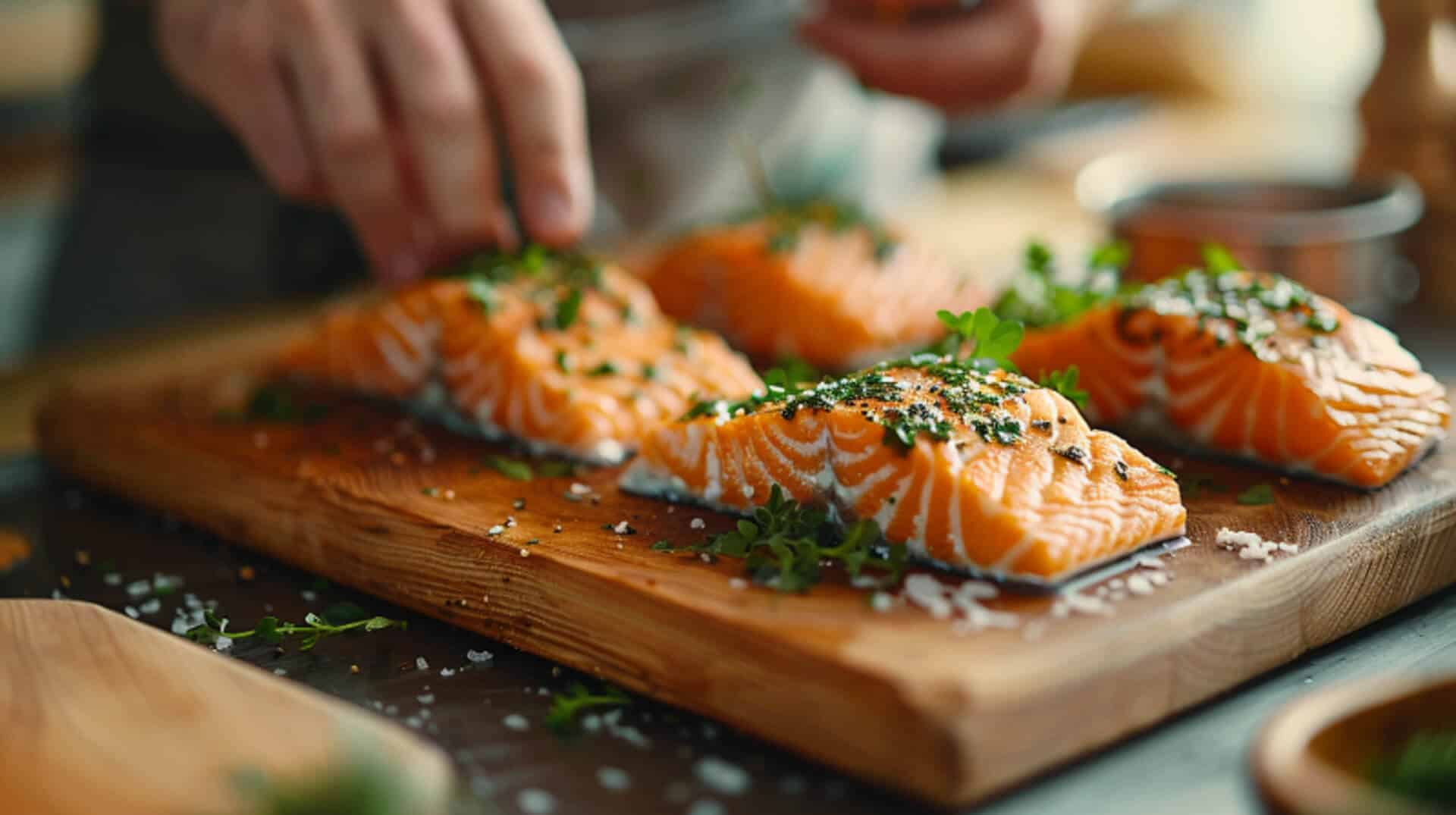
Novel Methods for Iron Enhancement
In the quest to increase iron intake from fish, innovative methods are being explored. One such approach is the use of iron-rich cooking tools, like the Lucky Iron Fish, which releases iron into the food during cooking, enriching the meal without altering the taste.
Impact of Cooking Tools on Iron Levels
Cooking tools and techniques play a significant role in the iron content of fish dishes. Utilising cast iron cookware, for example, can increase the iron content of the food being prepared. The use of such cookware is particularly beneficial when preparing acidic dishes, as the acid helps to leach more iron from the pan into the food.
Food Technology’s Role in Iron Preservation
Advancements in food technology are crucial in preserving the iron content during fish processing. Flash-freezing fish at sea is a technique that not only retains the freshness but also conserves the nutrient profile, including iron. Vacuum-sealing and modified atmosphere packaging are other technologies that help maintain the iron content from processing to plate.
Nutrition Science Influencing Fish Consumption
Emerging findings in nutrition science continually shape dietary recommendations. Research into the bioavailability of iron from different fish species and the impact of dietary combinations on iron absorption informs guidelines on how to consume iron-rich fish most effectively. These insights guide consumers toward making choices that optimise iron intake for their health needs.
Iron Content: Wild-Caught vs. Farm-Raised Fish
Nutritional Differences Between Wild and Farmed Fish
The iron content in fish can vary between wild-caught and farm-raised species. Wild-caught fish often have a more varied diet, which can lead to a higher concentration of minerals, including iron. Farm-raised fish, on the other hand, are typically fed a controlled diet that may be fortified to enhance nutrient levels, including iron.
Evaluating Benefits and Drawbacks for Iron Intake
Benefits of Wild-Caught Fish:
– Potentially higher levels of iron due to natural diets.
– Less exposure to antibiotics and artificial feed.
Drawbacks of Wild-Caught Fish:
– Higher risk of mercury and other environmental contaminants.
– Availability and sustainability concerns.
Benefits of Farm-Raised Fish:
– Controlled environments can ensure consistent iron levels.
– Reduced risk of overfishing and ecosystem disruption.
Drawbacks of Farm-Raised Fish:
– Potential for lower iron content if not properly fortified.
– Use of antibiotics and other chemicals in some farming practices.
Impact of Farming Practices on Fish Nutrition
Aquaculture practices significantly influence the nutritional value of fish. Sustainable farming methods that mimic natural conditions can result in higher nutrient content, including iron. Conversely, intensive farming practices may reduce the nutritional quality of fish.
Consumer Considerations for Iron-Rich Fish
When seeking iron-rich fish options, consumers should consider the source. Researching the farming or fishing practices of the supplier can provide insights into the nutritional value of the fish. Certifications and labels may also guide consumers toward more nutrient-dense choices.
Incorporating Iron-Rich Fish into Your Diet
Key Takeaways for Enhancing Iron Intake
For those looking to boost their iron intake, incorporating fish into the diet is a strategic choice. Fish such as tuna, salmon, and sardines are not only rich in heme iron, which is readily absorbed by the body, but also offer a wealth of other nutrients that support overall health.
Tailoring Fish Consumption to Health Needs
Individuals can tailor their fish consumption to their specific health needs by considering the type and quantity of fish. For example, selecting low-mercury fish is crucial for pregnant women and young children, while those with cardiovascular concerns might prioritise omega-3-rich fish like mackerel.
Simple Steps to Include Iron-Rich Fish in Meals
To start incorporating more iron-rich fish into meals, one can begin by adding fish to the weekly menu, aiming for at least two servings per week. Experimenting with simple recipes that pair fish with vitamin C-rich foods can enhance iron absorption.
How “Frozen Fish Direct” Provides Quality Options
Frozen Fish Direct” assists customers in accessing high-quality, iron-rich fish options by offering a diverse selection of frozen seafood. Their products are frozen at peak freshness, ensuring nutrient retention and convenience for consumers looking to enrich their diets with iron.
